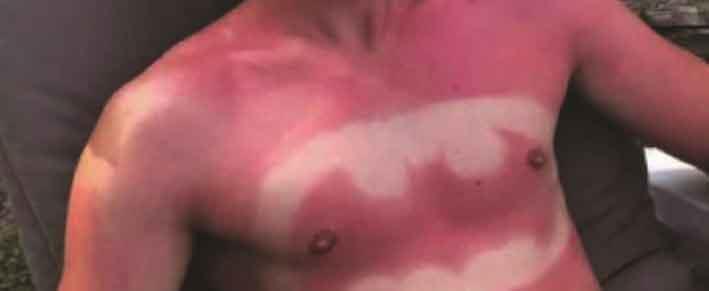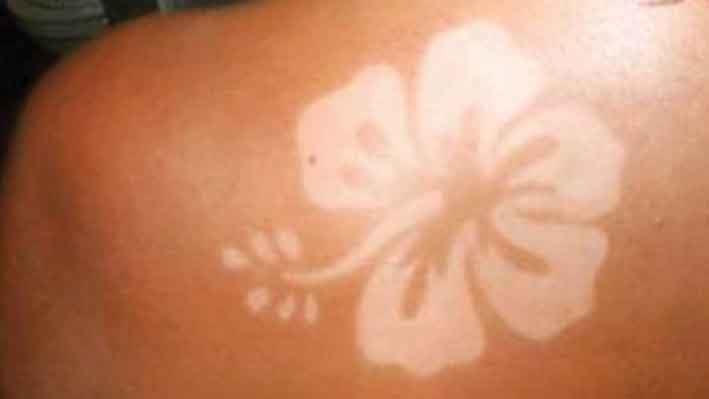Despite several warnings on the implications of sun exposure on the skin, many still persist on using no protection, all for the sake of a tan.
Some have taken this to a higher level, engaging in the latest pointless trend – sunburn art. A number of photos on social media, tagged #sunburnart, show a number of people tortuously burned by the sun, with a strategically placed pattern which is produced with a stencil or sun screen application.
Fortunately, authorities in Malta have not yet come across this type of incident and have strongly discouraged it, saying such behaviour would be very risky.
Dermatologist Lawrence Scerri said that he only hopes that he would not come across such incidents, calling the trend “crazy”.
So how is it done? Using sunblock or plasters, people have been making designs on their skin and then leaving the areas surrounding the ‘art’ unprotected from the sun.
But the trend has made experts cringe. The Skin Cancer Foundation in the United States has strongly warned against the practice. It said that sustaining five or more sunburns in youth increases melanoma risk by 80%. A person’s risk for melanoma doubles if the person had more than five sunburns. Meanwhile, the NHS in the United Kingdom has also warned against the trend.
Currently, between 2 and 3 million non-melanoma skin cancers and 132,000 melanoma skin cancers occur globally each year.

Authorities warn against sun exposure
In comments to The Malta Independent, a spokesperson for the health department reminded that exposure to the ultraviolet rays of the sun, especially episodes of sunburn are the main cause of melanoma. Furthermore, there is a strong link between episodes of sunburn in childhood and the subsequent development of melanoma.
The cancer-inducing damage to the genetic material (DNA) in the skin sustained with each episode of sunburn is irreversible. As a consequence, this cumulative damage tends to translate into skin cancer decades later.
Besides melanoma, the sun induces other forms of skin cancer, which though not usually fatal, often produce significant disfigurement. The sun’s ultraviolet rays also cause premature ageing of the skin in the form of wrinkles, blemishes, roughness, broken veins, and scaly patches.
The spokesperson added that Melanoma skin cancer invades the skin and can spread to other organs in the body, often with fatal consequences.
Surgical removal of a melanoma caught in an early stage (thin melanoma) leads to an excellent survival rate in the region of 90-95% at 5 years. However, the chances of survival once a melanoma has spread beyond the skin are not so good.
It is advised that exposure to the sun is avoided. This can be achieved through a combination of two strategies. First, avoid being outdoors as much as possible when the sun is most intense i.e. 11.00am to 4.00pm,
Secondly, cover up against harmful UV radiation if one cannot help being outdoors during the hours of peak sunshine, such as in the case of persons having a predominantly outdoor occupation.

Facts and figures
· Each year, between 45 and 55 new cases of melanoma skin cancer are diagnosed in Malta, and about 10 patients do not make it
· The mortality of skin cancer cases, or melanoma, in Malta increased by 76% between 1993 and 2014, with a total of 718 cases of Invasive Malignant Melanoma being diagnosed, and 130 deaths reported from the cancer
· If detected early, cure for the cancer is simple and straightforward
· Melanoma is by far the most common skin disease-related cause of death worldwide and cases are rising. It can be prevented by minimizing exposure to the sun, avoiding sunburn and applying sun cream
· Up to 80% of the sun’s UV rays can penetrate through clouds and fog
· People with pale or freckled skin, fair or red hair and blue eyes belong to the highest risk group